 Java
Java javaTutorial
javaTutorial The logical process of developing a tailorable online painting application in Java
The logical process of developing a tailorable online painting application in JavaLogical process of developing tailorable online painting applications in Java
In the Internet era, there are more and more network applications, and people are beginning to pursue more diverse and personalized applications. Online drawing application is one of them. It allows users to draw directly on the web page, and then save and share their works. This article will introduce how to use Java language to develop a tailorable online painting application.
- Building a web user interface
First of all, you need to use HTML, CSS, JavaScript and other related technologies to build a web user interface. Here you can use JavaScript frameworks such as React or AngularJS to develop web applications to achieve a more flexible and efficient development method.
- Add a painting area
Add a painting area in the user interface for users to paint in this area. This functionality can be achieved using the canvas element in HTML5. The canvas element provides a rich drawing API, including a variety of graphic drawing tools and style attributes.
- Implement drawing functions
In the drawing area, various types of drawing functions need to be implemented, including lines, rectangles, circles, ellipses and text, etc. These functions can be implemented through the API provided by the canvas element. For example, the function of drawing a line can be realized through the API for drawing straight lines, and the function of drawing a circle can be realized through the API for drawing a circle, etc. Various drawing functions can be combined to achieve richer and more diverse effects.
- Add color and size options
During the painting process, the user may need to select the color and size of the brush. Corresponding options can be added to the user interface for user selection. These options can be implemented through HTML form elements, saving the user's selections in variables, and then using the variable values to set properties such as the color and size of the brush when drawing.
- Add undo and restore functions
During the painting process, users may need to undo or restore previous operations. You can use JavaScript to save each user's painting operations in an array. When you need to undo or restore, you can directly take out the corresponding operations from the array to undo or restore. The undo and redo functions can greatly enhance the user's drawing experience.
- Add upload and download functions
After completing the painting, users need to upload or download their works. You can use Ajax technology to upload the user's work to the server, or download the user's work locally through the browser's download function. Upload and download functions can be implemented through JavaScript.
- Realizing the cropping function
Some users may only need to crop out part of the painting and save it as a separate picture or as part of a complete picture . In order to achieve this function, a cropping tool can be added to the user interface to allow users to select the area that needs to be cropped. Use the API provided by the canvas element to draw the selected area, and then save the canvas content as a picture to complete the cropping function.
Summary
Through the above steps, we can develop a tailorable online painting application. As a cross-platform programming language, the Java language can run on different operating systems and devices, so it is an ideal language for building cross-platform web applications. In the future, with the continuous development of network applications, the demand for Web application development based on the Java language will become greater and greater.
The above is the detailed content of The logical process of developing a tailorable online painting application in Java. For more information, please follow other related articles on the PHP Chinese website!
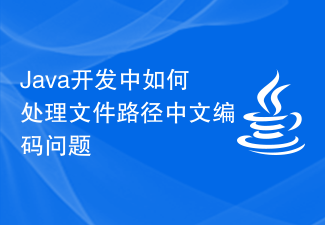 Java开发中如何处理文件路径中文编码问题Jun 29, 2023 pm 05:11 PM
Java开发中如何处理文件路径中文编码问题Jun 29, 2023 pm 05:11 PM在Java开发中处理文件路径中的中文编码问题是一个常见的挑战,特别是在涉及文件上传、下载和处理等操作时。由于中文字符在不同的编码方式下可能会有不同的表现形式,如果不正确处理,可能会出现乱码或路径无法识别的问题。本文将探讨如何正确处理Java开发中的文件路径中文编码问题。首先,我们需要了解Java中的编码方式。Java内部使用Unicode字符集来表示字符。而
 如何解决Java开发中的HTTP请求连接被拒绝问题Jun 29, 2023 pm 02:29 PM
如何解决Java开发中的HTTP请求连接被拒绝问题Jun 29, 2023 pm 02:29 PM如何解决Java开发中的HTTP请求连接被拒绝问题在进行Java开发中,经常会遇到HTTP请求连接被拒绝的问题。这种问题的出现可能是由于服务器端限制了访问权限,或是网络防火墙阻止了HTTP请求的访问。解决这个问题需要对代码和环境进行一些调整。本文将介绍几种常见的解决方法。检查网络连接和服务器状态首先,确认你的网络连接是正常的,可以尝试访问其他的网站或服务,看
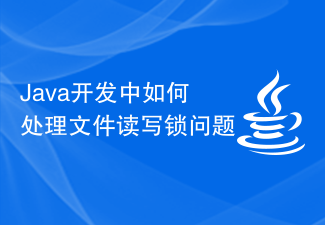 Java开发中如何处理文件读写锁问题Jun 29, 2023 am 09:55 AM
Java开发中如何处理文件读写锁问题Jun 29, 2023 am 09:55 AMJava是一种功能强大的编程语言,广泛应用于各种领域的开发中,特别是在后端开发中。在Java开发中,处理文件读写锁问题是一个常见的任务。本文将介绍如何在Java开发中处理文件读写锁问题。文件读写锁是为了解决多线程同时读写文件时可能出现的并发冲突问题。当多个线程同时读取一个文件时,不会产生冲突,因为读取是安全的。但是,当一个线程在写入文件时,其他线程可能正在读
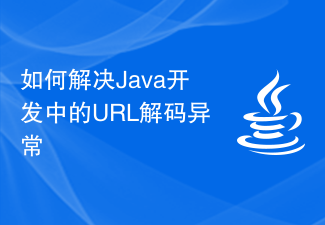 如何解决Java开发中的URL解码异常Jun 29, 2023 pm 02:07 PM
如何解决Java开发中的URL解码异常Jun 29, 2023 pm 02:07 PM如何解决Java开发中的URL解码异常在Java开发中,我们经常会遇到需要解码URL的情况。然而,由于不同的编码方式或者不规范的URL字符串,有时候会出现URL解码异常的情况。本文将介绍一些常见的URL解码异常以及对应的解决方法。一、URL解码异常的产生原因编码方式不匹配:URL中的特殊字符需要进行URL编码,即将其转换为以%开头的十六进制值。解码时,需要使
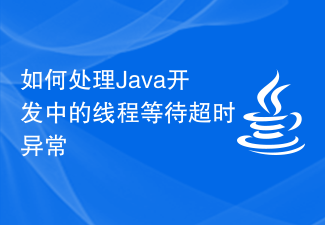 如何处理Java开发中的线程等待超时异常Jun 29, 2023 pm 06:18 PM
如何处理Java开发中的线程等待超时异常Jun 29, 2023 pm 06:18 PM如何处理Java开发中的线程等待超时异常在Java开发中,我们经常会遇到一种情况:当一个线程等待其他线程完成某个任务时,如果等待的时间超过了我们设定的超时时间,我们需要对该异常情况进行处理。这是一个常见的问题,因为在实际应用中,我们无法保证其他线程能在我们设定的超时时间内完成任务。那么,如何处理这种线程等待超时异常呢?下面,我将为你介绍一种常见的处理方法。首
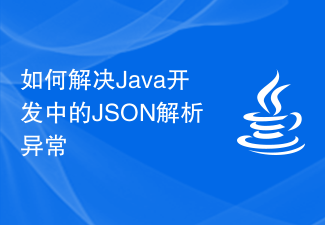 如何解决Java开发中的JSON解析异常Jun 29, 2023 pm 04:09 PM
如何解决Java开发中的JSON解析异常Jun 29, 2023 pm 04:09 PM如何解决Java开发中的JSON解析异常JSON(JavaScriptObjectNotation)是一种轻量级的数据交换格式,由于其易读性、易于解析和生成等特点,被广泛应用于网络数据传输、前后端交互等场景。在Java开发中,使用JSON进行数据的序列化和反序列化是非常常见的操作。然而,由于数据的结构和格式多种多样,JSON解析异常在Java开发中时常出
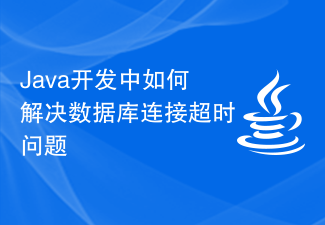 Java开发中如何解决数据库连接超时问题Jun 29, 2023 am 09:40 AM
Java开发中如何解决数据库连接超时问题Jun 29, 2023 am 09:40 AMJava开发中如何解决数据库连接超时问题简介:在Java开发中,处理数据库是非常常见的任务之一。尤其是在Web应用程序或后端服务中,与数据库的连接经常需要进行长时间的操作。然而,随着数据库的规模不断增大和访问请求的增加,数据库连接超时问题也开始变得常见。本文将讨论在Java开发中如何解决数据库连接超时问题的方法和技巧。一、理解数据库连接超时问题在开始解决数据
 如何优化Java字符编码转换速度?Jun 30, 2023 am 11:25 AM
如何优化Java字符编码转换速度?Jun 30, 2023 am 11:25 AM标题:如何处理Java开发中的字符编码转换速度问题导语:随着互联网的发展,字符编码问题在计算机领域变得愈发重要。Java作为一种常用的编程语言,其字符编码转换的速度对于处理大量数据和提供高性能的应用程序至关重要。本文将介绍一些有效的方法和技巧,帮助开发者解决Java开发中的字符编码转换速度问题。一、了解字符编码在解决字符编码转换速度问题之前,我们需要了解一些


Hot AI Tools

Undresser.AI Undress
AI-powered app for creating realistic nude photos

AI Clothes Remover
Online AI tool for removing clothes from photos.

Undress AI Tool
Undress images for free

Clothoff.io
AI clothes remover

AI Hentai Generator
Generate AI Hentai for free.

Hot Article

Hot Tools

SublimeText3 Linux new version
SublimeText3 Linux latest version

WebStorm Mac version
Useful JavaScript development tools

Dreamweaver CS6
Visual web development tools

SAP NetWeaver Server Adapter for Eclipse
Integrate Eclipse with SAP NetWeaver application server.

SublimeText3 Chinese version
Chinese version, very easy to use





